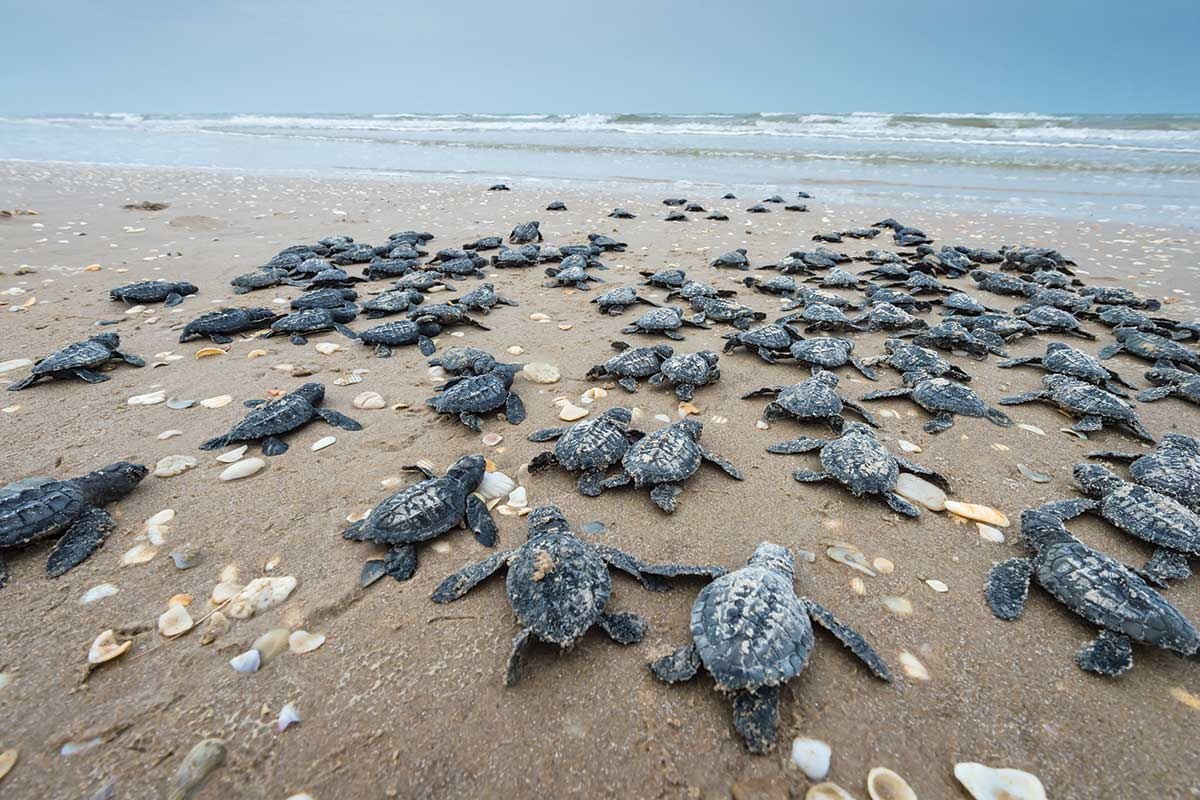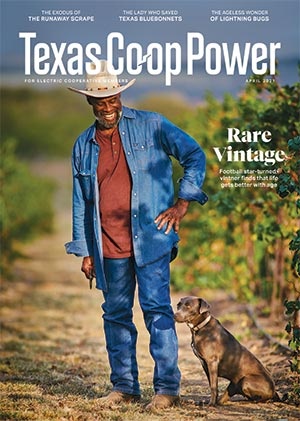A kemp’s ridley sea turtle emerges from the Gulf of Mexico onto a Padre Island beach and clambers toward a dune in search of a place to dig a nest and lay up to 100 eggs. Before she finds the right spot, beachgoers approach and take photographs. Instead of nesting, the frightened turtle retreats into the water.
This is a scenario that Nancy Lubbock, a volunteer with the Padre Island National Seashore’s Division of Sea Turtle Science and Recovery, has witnessed several times. “You just don’t know where she’s going to end up or lay the eggs,” says Lubbock.
Donna Shaver, chief of the division, is fearful when nesting turtles are frightened back into the water. If the turtle heads back into the surf before laying eggs, it could be days before she comes ashore again.
“She needs to lay those eggs then and there,” Shaver says. “Just the process of her coming on the beach makes her vulnerable to coyotes or people.”
Every year, from April to mid-July, Kemp’s ridley sea turtles, a critically endangered species, shuffle onto Texas beaches to lay eggs. Each one is onshore less than an hour, but some beachgoers are lucky enough to witness the process. “Just let her do her thing and realize how lucky you are to get to see one of these turtles,” Shaver says. “You’ve hit the jackpot.”
Look but don’t touch, Shaver says. It’s illegal and harmful. “We don’t even touch them without gloves,” she says, “and you can harm them by squeezing the eggs or turtles too much.”
Staff and volunteers with Shaver’s program find, document and protect Kemp’s ridleys. They retrieve the precious eggs and incubate them 50–60 days, until they hatch. Then the hatchlings can be released into the Gulf.
Over the past several years, Kemp’s ridleys’ numbers have increased in Texas overall, but the number of nests found on South Padre Island National Seashore has fluctuated recently from a high of 219 in 2017 to 136 in 2020. In 1994, only a single nest was found.
Kemp’s ridleys are the smallest of the five sea turtle species in the Gulf, making it hard to see their tracks in the sand. They also love to nest on windy days, in high tide and during big weather fronts, so their faint tracks are often blown or washed away.
“Kemp’s ridleys are very hard to spot,” Shaver says. “And with their tracks getting blown away or obliterated by rain, people on the beach sometimes don’t know to watch out for them.”
In Texas, driving on beaches is allowed, and that makes Kemp’s ridleys vulnerable to inattentive drivers. Shaver explains that the turtles like the soft sand of the beach roadways. She works to educate people on the turtles’ habits, hoping to achieve a balance between recreation and protection.
Maureen Hurlow, a volunteer with the program since 2005, says that one of the most crucial precautions beachgoers can take is driving slowly and observing speed limits. When turtles are nesting, she explains, they go into a trance and become vulnerable to vehicles. “We haven’t seen a turtle get hit on the national seashore, but we know it’s happened in South Texas,” she says. “We feel as the turtle population increases, and people are not watching out for them, it’s only a matter of time because the turtles are very hard to see. Just slow down; you’ll get there.”
Another threat to Kemp’s ridleys’ resurgence is people digging holes in the sand for fire pits or sand castles. Nesting turtles and hatchlings can fall into holes and get trapped. To prevent this, it’s important that beachgoers fill in any holes they dig. Lubbock also advocates taking everything you bring to the beach back home—especially water bottles, plastic bags and fishing line. “The line gets wrapped around their flippers, and they can get caught in trash and canopies,” she says. “Water bottles and plastic bags also look like squid to them, and they try and eat them, which will kill them.”
Kemp’s ridleys have been around for 4 million years, and conservationists are determined to help them thrive. “We’re going to have to all do our part and continue to work hard to make sure Kemp’s ridleys continue to have success,” Lubbock says.
Amanda Ogle is a freelance writer and editor covering travel, sustainability, food and drink, health and fitness, and general lifestyle topics. Her work has appeared in Travel + Leisure, National Geographic, Texas Highways, American Way, Virtuoso Traveler and more. You can find all of her work at amandaogle.com.


